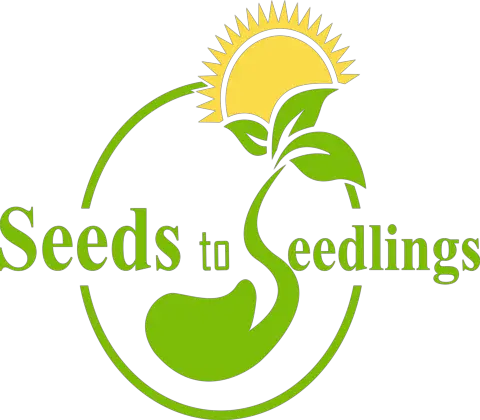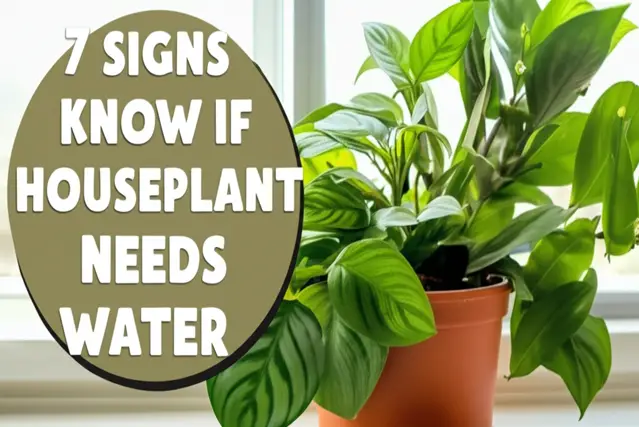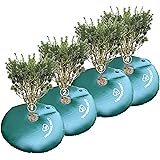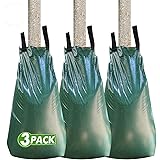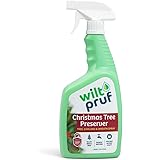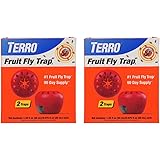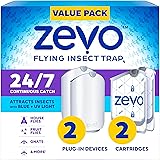Welcome, plant parent! Are your beloved houseplants looking a little droopy? Are you constantly second-guessing whether you’re overwatering or underwatering them? You’re not alone. Knowing when to water your houseplants is one of the biggest challenges for both beginners and experienced plant enthusiasts. Overwatering is a common culprit, leading to root rot and a sad demise.
Underwatering, on the other hand, can cause dehydration and stunted growth. But fear not! This comprehensive guide will equip you with the knowledge to accurately assess your plant’s hydration needs and provide the perfect amount of water every time. We’ll delve into the seven most crucial signs indicating when your houseplant is thirsty, along with actionable care tips to ensure your green companions thrive. Plus, we’ll cover current trends, relevant statistics, and even touch upon the evolving regulations surrounding plant care. Let’s dive in!
The Growing Trend of Indoor Plants in 2024
Before we get into the nitty-gritty of watering, let’s acknowledge the booming popularity of houseplants! In 2024, the trend shows no signs of slowing down. Several factors contribute to this green revolution:
- Increased Urbanization: With more people living in cities, houseplants provide a much-needed connection to nature. They bring a touch of the outdoors inside, creating a more calming and aesthetically pleasing environment.
- Wellness Focus: Studies consistently show that houseplants improve air quality, reduce stress levels, and boost productivity. This aligns perfectly with the growing emphasis on holistic well-being. According to a 2023 study by the University of Washington, indoor plants can reduce indoor air pollutants by as much as 87% within 24 hours.
- Social Media Influence: Platforms like Instagram and Pinterest are filled with stunning plant displays, inspiring people to cultivate their own indoor jungles. #plantsofinstagram and #houseplantclub are just the tip of the iceberg.
- Accessibility and Affordability: Houseplants are now more readily available and affordable than ever before. From local nurseries to big-box stores, finding the perfect plant is easier than ever.
- DIY and Personalization: Growing plants allows people to express their creativity and create personalized spaces. From repotting to propagation, it’s a hobby that provides a great sense of accomplishment.
Statistically, the global indoor plant market is projected to reach $64.47 billion by 2027, according to a report by Allied Market Research. This represents a significant growth trajectory, highlighting the continued importance of understanding proper plant care, including the critical aspect of watering.
Interestingly, we are also seeing a shift towards more sustainable and eco-friendly practices in the plant industry. This includes:
- Peat-free potting mixes: Peat harvesting is environmentally damaging, so more gardeners are opting for sustainable alternatives like coco coir or compost-based mixes.
- Organic fertilizers: Moving away from synthetic fertilizers to reduce chemical runoff.
- Reusable pots and containers: Reducing plastic waste through recycling and repurposing.
- Water-wise gardening practices: Focusing on efficient watering techniques to conserve water resources.
Read More: How to Propagate Pilea Plants From Leaves: Easy 2025 Guide
Understanding the Basics of Plant Watering
Before we delve into the specific signs that your plant needs water, let’s establish some fundamental principles:

houseplant dehydration
- Not all plants are created equal: Different species have vastly different watering needs. A succulent, like a cactus or aloe vera, thrives on infrequent watering, while a moisture-loving fern needs consistently damp soil.
- Watering frequency vs. watering amount: It’s not just about how often you water, but also how much water you give each time. A thorough watering that saturates the soil is generally preferable to frequent, shallow watering.
- The importance of drainage: Proper drainage is crucial to prevent root rot. Make sure your pots have drainage holes and avoid letting your plants sit in standing water.
- Water quality matters: Tap water can contain chlorine and other chemicals that can be harmful to some plants. Consider using filtered water, rainwater, or letting tap water sit out for 24 hours to allow the chlorine to evaporate.
- Seasonal adjustments: Plants typically need less water during the dormant winter months when their growth slows down.
7 Signs Your Houseplant Needs Water
Now, let’s get to the heart of the matter: how to tell if your houseplant needs water. Here are seven key indicators to watch out for:
1. Dry Soil Surface
This is often the most obvious and easiest sign to check. Stick your finger about an inch or two into the soil. If the soil feels dry to the touch, it’s likely time to water. The key here is to go beyond just the very surface. The topsoil can dry out quickly, even if the soil deeper down is still moist.
How to check:
- The Finger Test: Gently push your finger into the soil about an inch deep. If it feels dry and dusty, it’s time to water.
- The Chopstick Test: Insert a wooden chopstick or skewer into the soil. When you pull it out, if it’s clean and dry, the soil is dry. If it has soil clinging to it, the soil is still moist.
Example: Imagine you have a peace lily. The top of the soil might appear dry, but when you stick your finger in, you might find it’s still slightly damp an inch or two down. In this case, you can likely wait another day or two before watering. However, if the soil is bone dry all the way down, it’s definitely time for a drink.
2. Wilting Leaves
Wilting is a classic sign of dehydration in plants. When a plant doesn’t have enough water, the cells lose turgor pressure, causing the leaves to droop and lose their rigidity. However, it’s important to note that wilting can also be a sign of *overwatering*, as root rot can prevent the plant from absorbing water even when it’s plentiful. So, always check the soil moisture first!
Important Note: Distinguish between wilting caused by underwatering and wilting caused by overwatering/root rot. If the soil is consistently soggy, and the leaves are wilting, you’re likely overwatering. If the soil is dry, the plant needs water.
Example: A fittonia, also known as a nerve plant, is notorious for its dramatic wilting when it needs water. Its leaves will visibly droop, almost collapsing. After a good watering, it usually bounces back within a few hours.
3. Change in Leaf Color
Leaf color can be a subtle but important indicator of a plant’s hydration status. While a healthy plant will have vibrant green leaves, underwatering can cause the leaves to turn yellow or brown, especially at the tips and edges. This discoloration is a sign that the plant is stressed and struggling to photosynthesize.
Identifying the Cause: Check the soil moisture to confirm if underwatering is the culprit. Also, make sure the plant isn’t getting too much direct sunlight, as this can also cause leaf burn and discoloration.
Example: A ZZ plant (Zamioculcas zamiifolia) is known for its drought tolerance, but even it will show signs of stress if consistently underwatered. The typically glossy green leaves may start to turn yellow or develop brown tips. While it can tolerate periods of dryness, prolonged underwatering will definitely take its toll.
4. Slowed or Stunted Growth
Water is essential for plant growth. If your plant’s growth seems to have stalled, or if new leaves are smaller than usual, it could be a sign of insufficient watering. Water carries nutrients from the soil to the rest of the plant, fueling its growth. Without enough water, the plant can’t develop properly.
Other Factors: Keep in mind that slowed growth can also be caused by other factors, such as insufficient light, lack of nutrients, or pest infestations. Make sure you’re providing the plant with optimal conditions in all aspects.
Example: Imagine you have a pothos plant that usually puts out new vines regularly. If you notice that the new leaves are much smaller than the older ones, and the plant isn’t producing new growth as quickly as it used to, it’s a strong indicator that it needs more water (assuming other factors like light and fertilization are adequate).
5. Soil Pulling Away From the Sides of the Pot
When soil dries out excessively, it can shrink and pull away from the sides of the pot. This creates a gap between the soil and the container, allowing water to run down the sides without actually saturating the root ball. This is a clear sign that the soil is extremely dry and needs a good soaking.
Rehydrating Dry Soil: When the soil has pulled away from the sides, it can be difficult to rehydrate it properly. Try bottom watering (placing the pot in a basin of water) or gently aerating the soil with a chopstick before watering from the top.
Example: You might observe this with a snake plant that you’ve neglected for a while. The soil will have visibly shrunk, creating a noticeable gap between the soil and the pot. When you water, the water might just flow straight through without properly wetting the soil.
6. Lighter Pot Weight
A well-hydrated pot will be noticeably heavier than a dry pot. This is because water adds significant weight to the soil. By lifting the pot, you can get a sense of how much moisture is retained in the soil. This is a particularly useful method for larger pots where sticking your finger into the soil isn’t practical.
Developing a Feel: Over time, you’ll develop a sense of how heavy your pots should feel when the soil is adequately moist. This takes practice, but it’s a valuable skill for any plant owner.
Example: If you have a large fiddle-leaf fig tree, you might not want to stick your hand deep into the pot every time you need to check for moisture. Instead, try lifting the pot. If it feels significantly lighter than usual, it’s a good indication that the soil is drying out and it’s time to water.
7. Drooping or Soft Stems
While wilting leaves are a common sign, drooping or softening stems can also indicate a severe lack of water. The stems provide structural support for the plant, and when they’re dehydrated, they lose their rigidity and start to droop or feel soft to the touch.
Advanced Stage of Dehydration: Drooping stems often indicate a more advanced stage of dehydration than wilting leaves. It’s crucial to address the issue promptly to prevent further damage to the plant.
Example: Imagine you have a polka dot plant (Hypoestes phyllostachya). This plant is quite sensitive to underwatering. If you let it dry out too much, not only will the leaves wilt, but the stems themselves will become limp and droopy. This is a sign that the plant is severely stressed and needs immediate attention.
Read More: Diatomaceous Earth: Uses, Benefits & Safety Tips (2025)
Watering Techniques: A Comprehensive Guide
Once you’ve identified that your plant needs water, it’s important to water it correctly. Here’s a detailed guide to various watering techniques:
Top Watering
This is the most common method, where you pour water directly onto the soil surface. It’s simple and effective, but it’s important to do it right.
How to Top Water:
- Use a watering can with a long spout for precise watering.
- Water slowly and evenly, saturating the entire soil surface.
- Continue watering until water drains out of the drainage holes. This ensures that the entire root ball is moistened.
- Avoid getting water on the leaves, as this can promote fungal growth (especially if the plant is in a humid environment).
- Empty the saucer underneath the pot after watering to prevent the plant from sitting in standing water.
Best for: Most houseplants benefit from top watering, but it’s especially suitable for plants with dense foliage that can prevent water from reaching the soil if bottom watered.
Bottom Watering
Bottom watering involves placing the pot in a basin of water and allowing the soil to absorb water from the bottom up. This method encourages deeper root growth and can help prevent overwatering.
How to Bottom Water:
- Fill a basin or sink with a few inches of water.
- Place the pot in the water, ensuring that the drainage holes are submerged.
- Allow the pot to sit in the water for 15-30 minutes, or until the top of the soil feels moist.
- Remove the pot from the water and allow any excess water to drain out.
- Empty the saucer underneath the pot.
Best for: Plants that prefer consistently moist soil, such as ferns and African violets. It’s also a good option for plants that are prone to fungal diseases, as it keeps the foliage dry.
Misting
Misting involves spraying the leaves of a plant with water. This increases humidity around the plant and can help prevent the leaves from drying out. However, misting is not a substitute for watering the soil.
How to Mist:
- Use a spray bottle filled with distilled or filtered water.
- Mist the leaves lightly, avoiding excessive saturation.
- Mist in the morning to allow the leaves to dry before nightfall.
Best for: Plants that thrive in high humidity, such as orchids, calatheas, and ferns. It’s also beneficial for plants in dry indoor environments, especially during the winter months when heating systems can lower humidity levels.
Important Note: Misting can increase the risk of fungal diseases if the leaves remain wet for extended periods. Ensure good air circulation around the plant.
Self-Watering Pots
Self-watering pots are designed to provide a consistent supply of water to plants, reducing the need for frequent watering. They typically consist of an inner pot with drainage holes and an outer reservoir that holds water.
How to Use Self-Watering Pots:
- Fill the water reservoir with water.
- The plant will draw water from the reservoir as needed.
- Check the water level regularly and refill when necessary.
Best for: People who tend to forget to water their plants or who travel frequently. They’re also a good option for plants that require consistent moisture.
Considerations: Self-watering pots are not suitable for all plants. Plants that prefer drier soil may be prone to root rot in self-watering pots. Choose the right type of plant for this setup.
Watering Cans vs. Other Methods
While you can technically use any container to water your plants, investing in a good watering can offers several advantages:
- Precision: Watering cans with long, narrow spouts allow you to direct water precisely where you need it, avoiding the leaves and stems.
- Control: The spout also allows you to control the flow of water, preventing overwatering and soil erosion.
- Ergonomics: Good watering cans are designed to be comfortable to hold and pour, reducing strain on your wrists and arms.
- Aesthetics: Let’s face it, a beautiful watering can can also add to the overall aesthetic of your plant collection.
Other methods, such as using a cup or a pitcher, can work in a pinch, but they lack the precision and control of a good watering can.
Factors Affecting Watering Frequency
The frequency with which you need to water your houseplants depends on several factors, including:
Plant Type
As mentioned earlier, different plant species have different watering needs. Succulents and cacti are drought-tolerant and prefer infrequent watering, while ferns and calatheas prefer consistently moist soil.
Pot Size and Material
Plants in smaller pots will dry out more quickly than plants in larger pots. Also, pots made of porous materials, such as terracotta, will lose moisture more quickly than pots made of plastic or glazed ceramic.
Light Exposure
Plants that receive more light will generally need more water than plants that receive less light. This is because light drives photosynthesis, which requires water.
Temperature and Humidity
Plants in warmer temperatures and lower humidity will dry out more quickly than plants in cooler temperatures and higher humidity. This is because warmer temperatures increase evaporation, and lower humidity decreases the amount of moisture in the air.
Season
During the growing season (spring and summer), plants typically need more water than during the dormant season (fall and winter). This is because plants are actively growing and using more water during the growing season.
Soil Type
Well-draining soil will dry out more quickly than soil that retains more moisture. Consider the composition of your potting mix. A mix high in perlite and sand will drain faster than a mix high in peat moss.
To illustrate this, let’s look at the watering needs of some popular houseplants:
| Plant Type | Watering Frequency | Soil Moisture Preference |
|---|---|---|
| Succulents (e.g., Echeveria, Aloe) | Every 2-4 weeks | Allow soil to dry out completely between waterings |
| Snake Plant (Sansevieria trifasciata) | Every 2-4 weeks | Allow soil to dry out completely between waterings |
| ZZ Plant (Zamioculcas zamiifolia) | Every 2-4 weeks | Allow soil to dry out completely between waterings |
| Pothos (Epipremnum aureum) | Every 1-2 weeks | Allow top inch of soil to dry out between waterings |
| Peace Lily (Spathiphyllum wallisii) | Every 1-2 weeks | Keep soil consistently moist, but not soggy |
| Ferns (e.g., Boston Fern, Maidenhair Fern) | Every 1-2 days | Keep soil consistently moist, but not soggy |
| Calathea (e.g., Prayer Plant) | Every 1-2 days | Keep soil consistently moist, but not soggy |
This table serves as a general guideline. Always adjust your watering schedule based on the specific needs of your plant and the environmental conditions in your home.
The Dangers of Overwatering
While underwatering can be detrimental to plant health, overwatering is arguably even more dangerous. Overwatering can lead to a host of problems, including:
- Root Rot: This is the most common consequence of overwatering. When the soil is constantly saturated, the roots are deprived of oxygen, creating an environment conducive to fungal growth. These fungi attack the roots, causing them to rot and die.
- Yellowing Leaves: Overwatering can cause the leaves to turn yellow, often starting with the lower leaves. This is because the roots are unable to absorb nutrients properly when they’re waterlogged.
- Edema: This is a condition where small blisters or bumps appear on the leaves due to excessive water uptake.
- Fungal Diseases: Overwatering creates a humid environment that favors the growth of fungal pathogens, leading to diseases like powdery mildew and leaf spot.
- Nutrient Deficiency: While it might seem counterintuitive, overwatering can actually lead to nutrient deficiencies. The excess water can leach nutrients out of the soil, making them unavailable to the plant.
How to Prevent Overwatering:
- Use well-draining soil.
- Choose pots with drainage holes.
- Water only when the soil is dry to the touch.
- Avoid letting your plants sit in standing water.
- Adjust your watering schedule based on the season and environmental conditions.
What to Do If You’ve Overwatered:
- Stop watering immediately.
- Allow the soil to dry out completely.
- If the plant is severely overwatered, consider repotting it with fresh, dry soil.
- Remove any affected leaves or stems.
- Improve air circulation around the plant.
If root rot is suspected, carefully remove the plant from the pot and inspect the roots. Healthy roots are firm and white, while rotten roots are mushy and brown or black. Trim away any rotten roots with a sterile knife or scissors, and repot the plant in fresh, well-draining soil.
Watering Plants While You’re Away
Going on vacation doesn’t have to mean neglecting your beloved houseplants. Here are some strategies for keeping them watered while you’re away:
Self-Watering Methods
- Self-Watering Pots: As mentioned earlier, these are a great option for providing a consistent supply of water.
- Water Globes: These are decorative glass or plastic globes that you fill with water and insert into the soil. They release water slowly as the soil dries out.
- DIY Self-Watering System: You can create a simple self-watering system by using a plastic bottle. Fill the bottle with water, poke a few small holes in the cap, and bury the bottle upside down in the soil.
- Wicking System: Place one end of a cotton rope or strip of fabric into the soil of your plant and the other end into a container of water. The rope will wick water from the container into the soil.
Group Your Plants
Grouping your plants together can help increase humidity around them, reducing water loss.

wilting leaves
Move Plants to a Shadier Location
Moving your plants to a shadier location will reduce their water needs while you’re away.
Ask a Friend or Neighbor
The most reliable option is to ask a friend or neighbor to water your plants while you’re gone. Provide them with clear instructions on how often to water each plant.
Watering Apps and Devices
In the age of smart technology, there are even apps and devices designed to monitor and control your plant’s watering needs. These devices typically use soil moisture sensors to track the moisture level in the soil and can even automatically water your plants when needed. While these can be useful, they are not foolproof and should still be monitored.
Regulations and Sustainability in Plant Care (2024 Update)
The plant industry is increasingly focused on sustainability and environmental responsibility. Here are some key trends and regulations to be aware of in 2024:
- Restrictions on Peat Use: Many countries are implementing restrictions on the use of peat in potting mixes due to the environmental damage caused by peat harvesting. Peatlands are important carbon sinks, and their destruction contributes to climate change. Look for peat-free potting mixes that use sustainable alternatives like coco coir, compost, or wood fiber.
- Regulations on Pesticide Use: Regulations on the use of pesticides in plant production are becoming stricter. Opt for organic or natural pest control methods whenever possible.
- Water Conservation Measures: Droughts and water scarcity are becoming increasingly common, so water conservation is essential in plant care. Use efficient watering techniques, such as drip irrigation or soaker hoses, and collect rainwater for watering your plants.
- Sustainable Packaging: The plant industry is moving towards more sustainable packaging options, such as recycled plastic pots and biodegradable packaging materials.
- Plant Health Certificates: When purchasing plants from abroad, ensure they have the necessary plant health certificates to prevent the introduction of invasive species and plant diseases. These certificates verify that the plants have been inspected and are free from pests and diseases.
By choosing sustainable practices, you can contribute to a healthier environment and support responsible plant production.
Troubleshooting Common Watering Issues
Even with the best intentions, you might encounter some common watering issues. Here’s how to troubleshoot them:
Problem: Yellowing Leaves
Possible Causes: Overwatering, underwatering, nutrient deficiency, pest infestation, insufficient light.
Solution: Check the soil moisture to determine if the plant is overwatered or underwatered. Adjust your watering schedule accordingly. If the soil moisture is adequate, consider other potential causes, such as nutrient deficiency or pest infestation. Fertilize your plant with a balanced fertilizer and inspect it for pests.
Problem: Brown Leaf Tips
Possible Causes: Underwatering, low humidity, tap water with high chlorine content, fertilizer burn.
Solution: Increase watering frequency if the soil is dry. Increase humidity by misting the plant or using a humidifier. Use filtered water or let tap water sit out for 24 hours to allow the chlorine to evaporate. Avoid over-fertilizing.
Problem: Wilting Leaves
Possible Causes: Underwatering, overwatering, root rot, transplant shock.
Solution: Check the soil moisture to determine if the plant is overwatered or underwatered. Adjust your watering schedule accordingly. If the soil is soggy, suspect root rot. Remove the plant from the pot and inspect the roots. Trim away any rotten roots and repot the plant in fresh, well-draining soil. If the plant has recently been transplanted, it may be experiencing transplant shock. Provide it with optimal care and allow it time to recover.
Problem: Mold on Soil Surface
Possible Causes: Overwatering, poor air circulation.
Solution: Allow the soil to dry out completely before watering again. Improve air circulation around the plant by using a fan or moving it to a more open location. Scrape off the mold from the soil surface. Consider repotting the plant with fresh, well-draining soil.
Problem: Stunted Growth
Possible Causes: Underwatering, nutrient deficiency, insufficient light, pest infestation, root-bound.
Solution: Check the soil moisture and adjust your watering schedule accordingly. Fertilize your plant with a balanced fertilizer. Ensure the plant is receiving adequate light. Inspect it for pests. If the plant is root-bound (the roots are tightly packed in the pot), repot it into a larger pot.
Problem: Sudden Leaf Drop
Possible Causes: Drastic changes in temperature or light, overwatering, underwatering, stress from repotting, pest infestation.
Solution: Ensure the plant is not exposed to drafts or sudden temperature fluctuations. Check the soil moisture and adjust watering as needed. If the leaf drop occurred shortly after repotting, it could be transplant shock. Minimize handling and provide consistent care. Inspect for pests and treat accordingly. If the plant has been moved to a significantly different light environment, gradually acclimate it to the new conditions.
Essential Tools for Watering Houseplants
Having the right tools can make watering your houseplants easier and more effective. Here are some essential tools to consider:
- Watering Can: Choose a watering can with a long, narrow spout for precise watering.
- Spray Bottle: Use a spray bottle for misting plants that require high humidity.
- Soil Moisture Meter: A soil moisture meter can help you accurately assess the moisture level in the soil.
- Watering Globes: These are a convenient option for self-watering, especially when you’re away.
- Saucers: Use saucers to catch excess water and prevent it from damaging surfaces.
- Hygrometer: A hygrometer measures humidity levels in your home, which can help you determine if your plants need misting.
Advanced Watering Techniques for Specific Plant Types
While general watering guidelines are helpful, some plant types benefit from more specialized techniques:
Orchids
Orchids are often grown in specialized potting mixes that provide excellent drainage. They prefer to be watered thoroughly and then allowed to dry out completely between waterings. A good method is to soak the orchid’s roots in water for 15-30 minutes, then allow all excess water to drain away. Avoid getting water in the crown of the plant, as this can lead to rot.
African Violets
African violets are sensitive to water on their leaves, which can cause spotting. Bottom watering is the preferred method for these plants. Place the pot in a saucer of water and allow the soil to absorb the water from the bottom up. Alternatively, use a watering can with a very long, thin spout to water directly into the soil without getting the leaves wet.
Cacti and Succulents
These plants are adapted to arid environments and prefer infrequent watering. When you do water them, water thoroughly, but then allow the soil to dry out completely before watering again. Overwatering is a common cause of death for cacti and succulents.
Carnivorous Plants
Carnivorous plants, such as Venus flytraps and pitcher plants, require special care when it comes to watering. They should only be watered with distilled water, rainwater, or reverse osmosis water. Tap water contains minerals that can be harmful to these plants. Keep the soil consistently moist, but not soggy.
Myths About Watering Houseplants
There are many myths and misconceptions surrounding watering houseplants. Let’s debunk some of the most common ones:

dry soil
- Myth: You should water your plants on a set schedule.
- Reality: Watering frequency depends on various factors, so it’s best to check the soil moisture before watering.
- Myth: All plants need the same amount of water.
- Reality: Different plant species have different watering needs.
- Myth: Misting is a substitute for watering.
- Reality: Misting increases humidity but doesn’t provide the plant with the water it needs for its roots.
- Myth: You should always water until water drains out of the drainage holes.
- Reality: While this is generally a good practice, some plants prefer slightly drier conditions and don’t need to be watered so thoroughly.
- Myth: Brown leaf tips always mean underwatering.
- Reality: Brown leaf tips can be caused by various factors, including low humidity, tap water, and fertilizer burn.
FAQ – Frequently Asked Questions
Here are some frequently asked questions about watering houseplants:
How do I know if I’m overwatering my plant?
Overwatering can lead to yellowing leaves, wilting, root rot, and fungal diseases. The soil will often be soggy, and the plant may have a foul odor.
How often should I water my succulents?
Succulents prefer to be watered infrequently, typically every 2-4 weeks. Allow the soil to dry out completely between waterings.
Is it better to water in the morning or evening?
Watering in the morning is generally preferable, as it allows the leaves to dry out before nightfall, reducing the risk of fungal diseases.
Can I use tap water to water my plants?
Tap water is generally safe for most plants, but some plants are sensitive to the chlorine and other chemicals in tap water. Consider using filtered water, rainwater, or letting tap water sit out
Final Words: The Importance of Observation and Experimentation
Ultimately, the best way to learn how to water your houseplants is to observe them closely and experiment with different watering techniques. Pay attention to how your plants respond to different watering schedules and adjust your approach accordingly. Every plant is unique, and what works for one plant may not work for another. Don’t be afraid to try new things and learn from your mistakes.
With time and experience, you’ll develop a green thumb and become a master of plant care. Don’t be discouraged by setbacks. Even experienced plant parents lose plants from time to time. View it as a learning opportunity and keep experimenting!
Auto Amazon Links: No products found.
4-Pack Tree Watering Ring, Tree Watering Bags Slow Release 20 Gallon, Tree Bags for Watering for Slow Drip 6 to 9 Hours, Low-Profile Watering Bags for New Trees, Multi-Trunk Trees and Shrubs
$47.99 (as of October 24, 2025 19:24 GMT +00:00 - More info- Product prices and availability are accurate as of the date/time indicated and are subject to change. Any price and availability information displayed on [relevant Amazon Site(s), as applicable] at the time of purchase will apply to the purchase of this product.
Perfect Plants Christmas Tree Saver 8oz. | Easy Use Xmas Tree Preserver Food | Have Healthy Green Christmas Trees All Holiday Season
$13.99 (as of October 24, 2025 19:24 GMT +00:00 - More info- Product prices and availability are accurate as of the date/time indicated and are subject to change. Any price and availability information displayed on [relevant Amazon Site(s), as applicable] at the time of purchase will apply to the purchase of this product.
VEVOR Tree Watering Bags Slow Release, 4 Pack 16 Gallons Tree Watering Ring, Reusable Refillable Tree Irrigation Ring Water Bags, Heavy Duty Watering System for Shrub Tree Root Drip Irrigation
$31.99 (as of October 24, 2025 19:24 GMT +00:00 - More info- Product prices and availability are accurate as of the date/time indicated and are subject to change. Any price and availability information displayed on [relevant Amazon Site(s), as applicable] at the time of purchase will apply to the purchase of this product.
Remiawy Tree Watering Bag, 20 Gallon Slow Release Watering Bag for Trees, Irrigation Bag Made of Durable PVC Material with Zipper (3 Pack 5-8 Hours Releasing Time)
$29.99 (as of October 24, 2025 19:24 GMT +00:00 - More info- Product prices and availability are accurate as of the date/time indicated and are subject to change. Any price and availability information displayed on [relevant Amazon Site(s), as applicable] at the time of purchase will apply to the purchase of this product.
Wilt-Pruf® Christmas Tree/Cutting Preserver Spray |Preserves Christmas Trees, Wreaths, Garlands, Cuttings and Carved Pumpkins | Reduces Needle Drop | Keeps Cut Trees Fresh Longer | Natural (32 oz)
$21.03 (as of October 24, 2025 19:24 GMT +00:00 - More info- Product prices and availability are accurate as of the date/time indicated and are subject to change. Any price and availability information displayed on [relevant Amazon Site(s), as applicable] at the time of purchase will apply to the purchase of this product.
Zevo Flying Insect Trap & Cartridge - Plug in Fly Trap & Indoor Bug Catcher for Gnats, House & Fruit Flies - Mess-Free - Use in Any Room - Uses Blue & UV Light (1 Plug in Device & 1 Cartridge)
$19.97 (as of October 25, 2025 19:58 GMT +00:00 - More info- Product prices and availability are accurate as of the date/time indicated and are subject to change. Any price and availability information displayed on [relevant Amazon Site(s), as applicable] at the time of purchase will apply to the purchase of this product.
Zevo Flying Insect Trap Official Refill Cartridges - Fits Both Zevo Trap & MAX Indoor Fly Trap - Authentic Trap+Lock Technology to Catch Gnats, House & Fruit Flys (4 Official Refill Cartridges)
$14.82 (as of October 25, 2025 19:58 GMT +00:00 - More info- Product prices and availability are accurate as of the date/time indicated and are subject to change. Any price and availability information displayed on [relevant Amazon Site(s), as applicable] at the time of purchase will apply to the purchase of this product.
TERRO Fruit Fly Traps for Indoors (4 Pack) + 180 Days of Lure Supply
$10.99 (as of October 25, 2025 19:58 GMT +00:00 - More info- Product prices and availability are accurate as of the date/time indicated and are subject to change. Any price and availability information displayed on [relevant Amazon Site(s), as applicable] at the time of purchase will apply to the purchase of this product.
Zevo 2 Flying Insect Traps & 2 Refill Cartridges - Plug in Fly Trap & Indoor Bug Catcher for Gnats, House & Fruit Flies - Blue & UV Light Technology, Mess-Free Alternative to Bug Zapper
$37.47 (as of October 25, 2025 19:58 GMT +00:00 - More info- Product prices and availability are accurate as of the date/time indicated and are subject to change. Any price and availability information displayed on [relevant Amazon Site(s), as applicable] at the time of purchase will apply to the purchase of this product.
TERRO Ant Killer Bait Stations T300B - Liquid Bait to Eliminate Ants - Bait System - 12 Count Stations for Effective Indoor Ant Control
$11.44 (as of October 25, 2025 19:58 GMT +00:00 - More info- Product prices and availability are accurate as of the date/time indicated and are subject to change. Any price and availability information displayed on [relevant Amazon Site(s), as applicable] at the time of purchase will apply to the purchase of this product.
